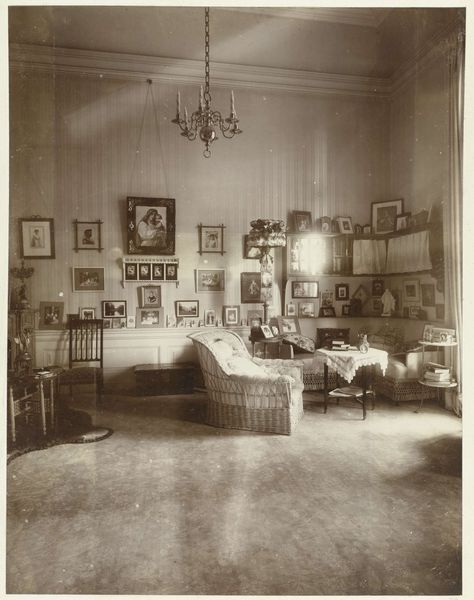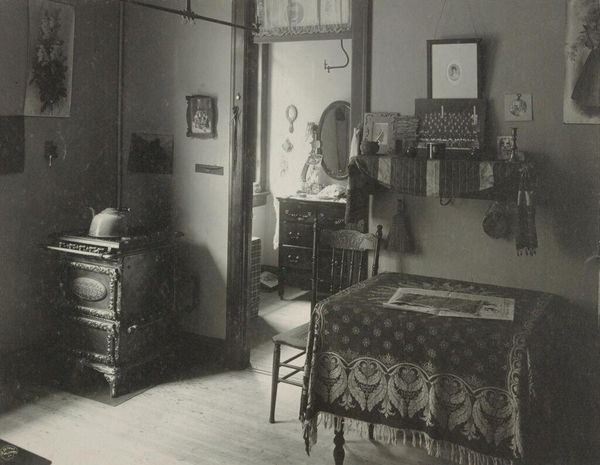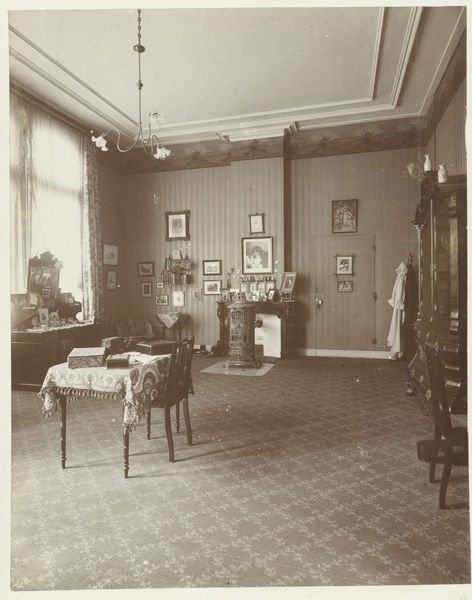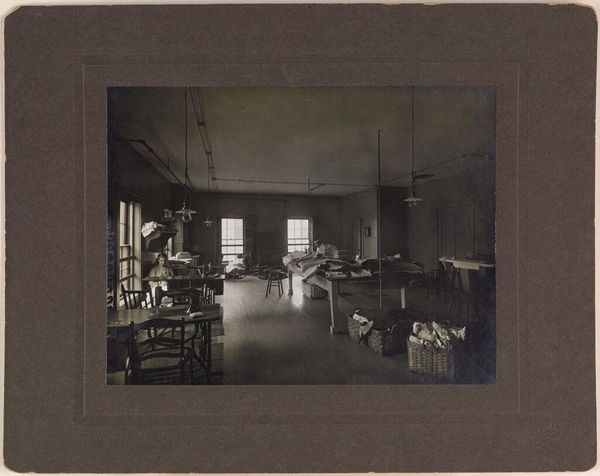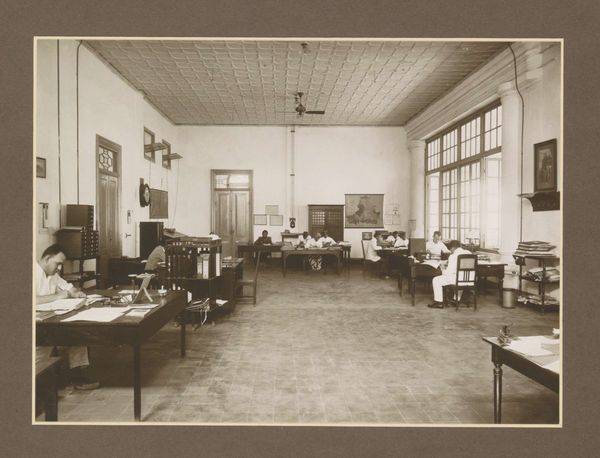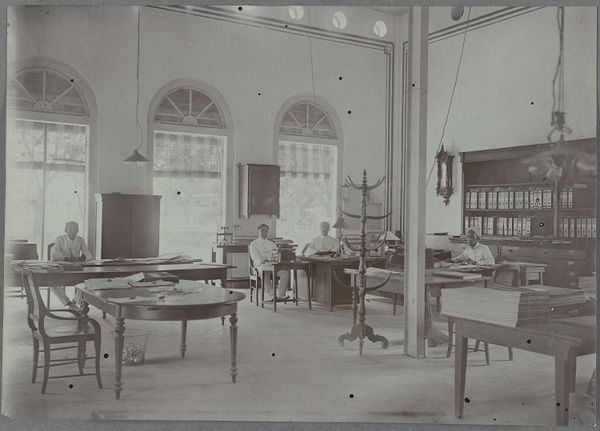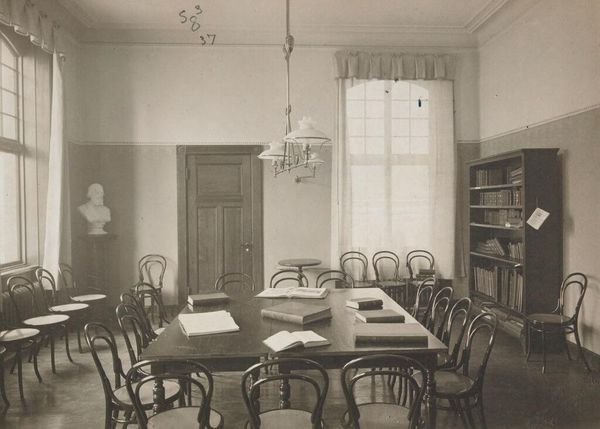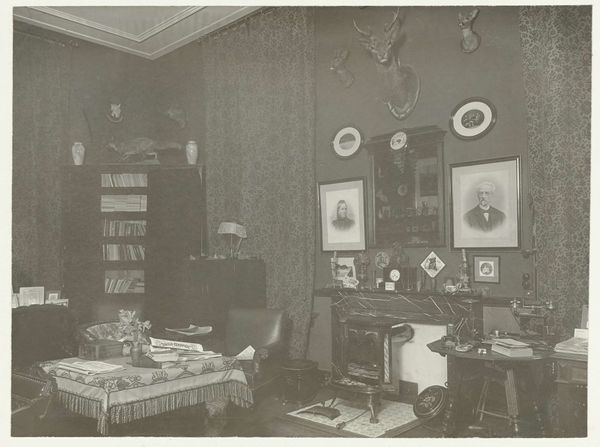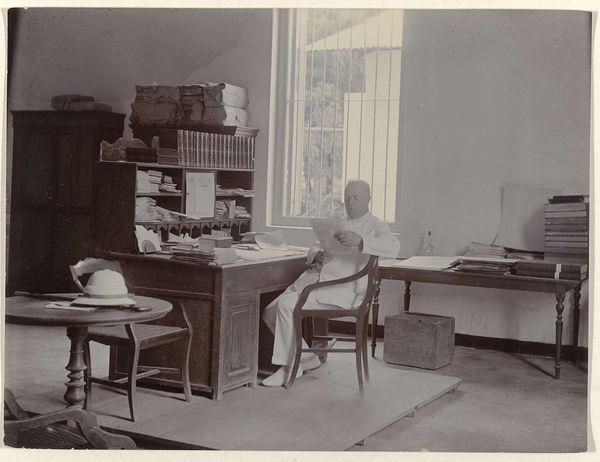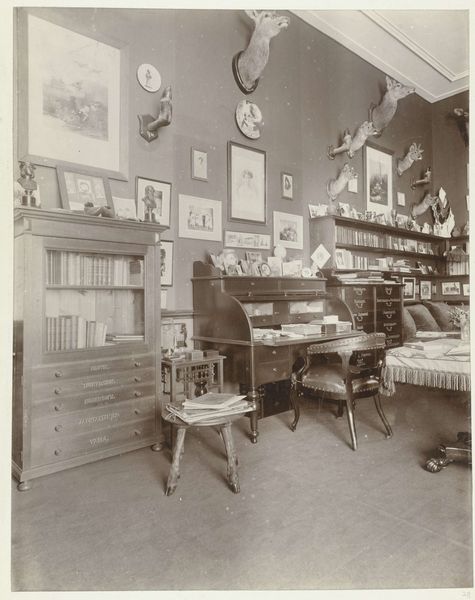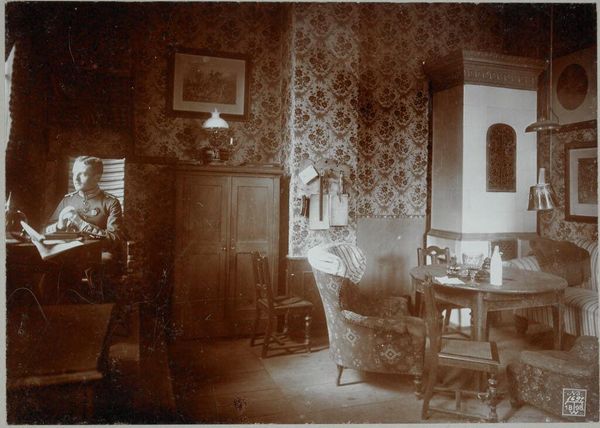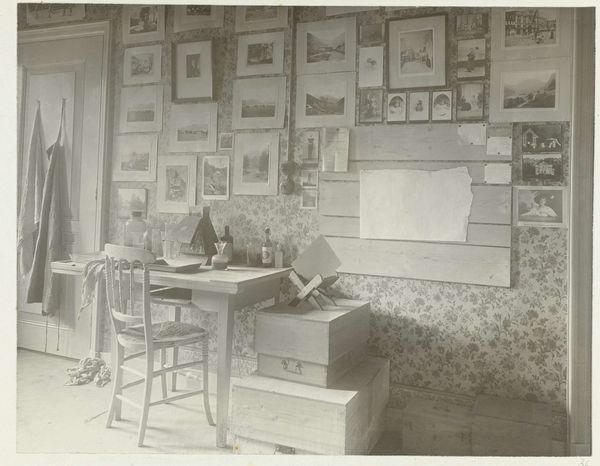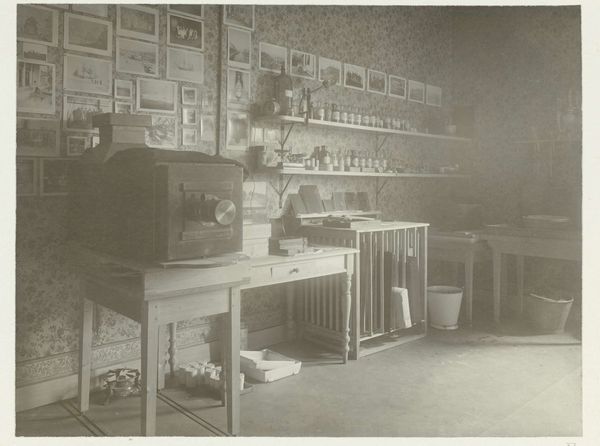
photography, gelatin-silver-print
#
still-life
#
print photography
#
archive photography
#
photography
#
historical photography
#
gelatin-silver-print
Dimensions: height 150 mm, width 200 mm
Copyright: Rijks Museum: Open Domain
Editor: Here we have "Administratie van de Drukkerij", taken in 1921, a gelatin silver print by T. Kaneo. I'm struck by how quiet it feels, even though it depicts a busy workplace. What do you see in this piece? Curator: It's a compelling document, isn't it? I see a study of power, really. Think about it: photography was still developing its role in society then, particularly in documenting labor. Kaneo captures this administration with a seemingly neutral eye, yet the very act of photographing, of archiving this scene, speaks to a certain societal structure and control. Who commissioned this photograph and why? Editor: That's an interesting perspective! I was so focused on the quiet humanness of it all, but I see what you mean. The composition, with the desks lined up and workers in similar positions, almost feels like an organizational chart made visual. Curator: Exactly! And consider the light, too. It streams in, illuminating the space, but also perhaps revealing the controlled, ordered nature of the workplace. Photography had immense power in constructing and reinforcing the ideals of that period. How do you think this image might have been received by different audiences back then? Was it meant to be viewed at all by the people in it? Editor: I hadn't even considered that it might not have been! If it was just for internal purposes, it would be documenting procedure and progress. Perhaps meant to assure someone about the running of the printery. Curator: And what if this was circulated? Imagine the statement it would make regarding the colonial infrastructure in that time, depending who was in the imagined or targetted audience. Editor: This has made me rethink how something that appears like just a still slice of life actually carries a complex story about power, perspective and context. I'll never see photographs the same way! Curator: That’s the beauty of looking at art through a historical lens. It forces us to question what we think we know, to see beyond the surface and recognize the social and political forces at play.
Comments
No comments
Be the first to comment and join the conversation on the ultimate creative platform.
